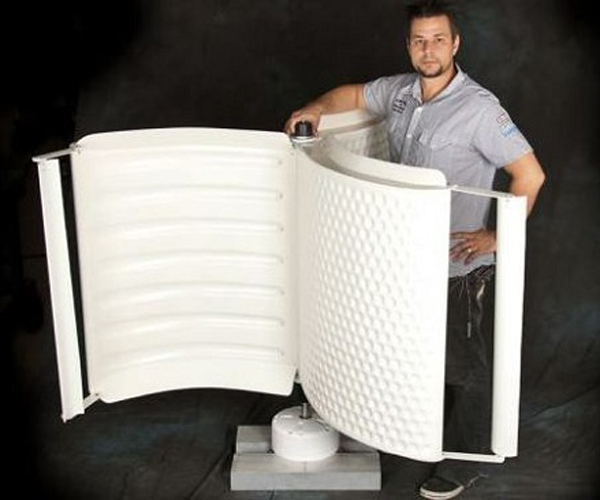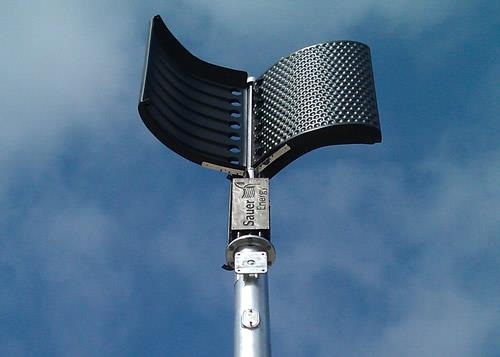The company behind a small-scale wind turbine which can be fitted to residential buildings or commercial premises has proposed creating community energy clusters where the electricity created could be used to power private homes or else sold to public utilities.
Sauer Energy, based in California, launched commercial production of its WindCharger vertical-axis wind turbine in November last year. The three-blade turbine is manufactured from UV-protected lightweight composite, resin and plastic, and is designed to operate in low wind environments.

The company said it wants to develop community wind projects featuring its wind turbine, the concept being to generate energy from a strategically placed cluster of turbines while remaining close to an existing grid.
In a statement, Sauer Energy said it intends to provide “a more compact and more easily affordable alternative, on a commercial scale, that can be privately owned and placed closer to the areas where more energy is consumed with less of a loss due to distance between the power producer and the grid.”
The clusters could either use the power themselves or sell it to public utilities in California, who are mandated under state laws to find a third of their power from renewables by 2020.
The company said the clusters could “transform rural or urban land into a revenue stream and foster hope for the future by expanding entrepreneurial ingenuity.”
The community wind project could be owned by an individual or a small local group, the company said. The project could contain a few units or multiple turbines, and the quantity of turbines used alongside wind frequency and wind speed would determine whether the project could turn a profit.
According to Sauer, its WindCharger can generate power at wind velocities as low as 5 mph, much lower than a traditional horizontal-blade turbine of similar size. In addition, the vertical-axis turbine can harvest wind blowing from any direction. The technology is also scalable, meaning it can be sized to meet the needs of particular buildings, and is intended to meet the needs of dense, urban areas.
A number of companies are now developing vertical-axis turbines to meet the need for small-scale turbines which can be fitted on to roofs in places where wind conditions are more sporadic and less high wind is available.

In a statement, Dieter Sauer, CEO and president of Sauer Energy, said: “Sauer Energy will be accelerating the early adoption of wind energy with technical approaches to low wind areas. Community Wind Projects come at a critical stage for local municipalities to meet future demand, secure jobs and present the potential for the spirit of free enterprise to prosper.
“We are working relentlessly to bring this opportunity to market in the near future. Follow our progress on our website,” Sauer added.